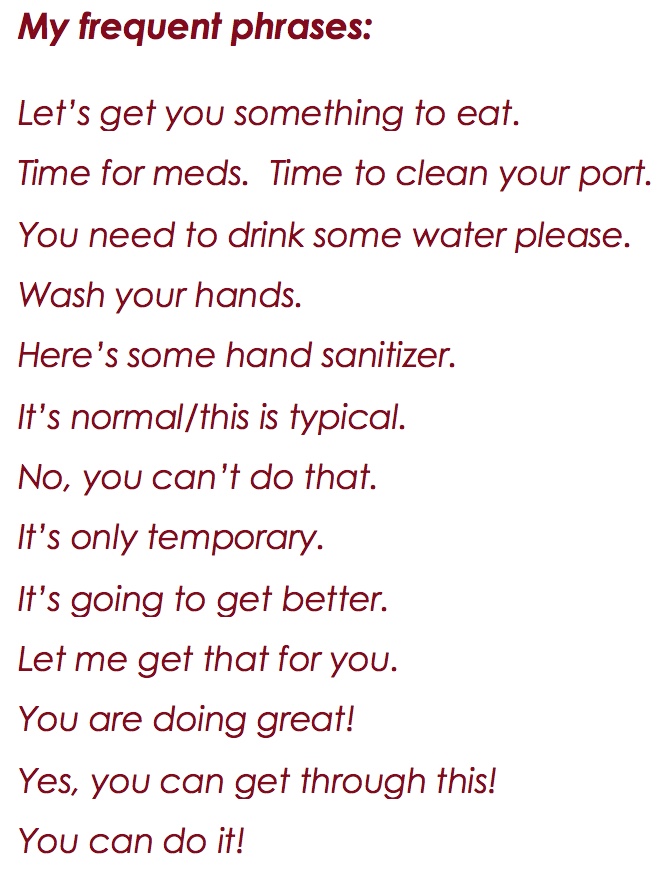In March, MPN Advocacy & Education International highlighted the story of a recent stem cell patient, Andrea (click here to view story). This month, Andrea’s wife, Denise, shares her story as a caregiver in an interview with us.

Andrea and Denise
How did you feel about your spouse’s decision to have a transplant? Were you apprehensive?
I have been a part of Andrea’s medical journey since her diagnosis from ET to myleofibrosis. I recall it took me about a week to learn how to pronounce the name correctly, and it has been an education ever since. Being present during doctor appointments and multiple clinical trials provided first-hand information in addition to our ongoing discussions. Observing and experiencing her five years of transfusion independence was a gift. We took advantage of the opportunity to cycle and travel together and separately. Knowing the clinical trial would either end or the drug would quit working was only a matter of time. And knowing how she physically felt prior to and after this time period played a role in my ‘wrapping my head’ around a possible future transplant. All the while, we adjusted and modified activities as needed in order to continue allowing her to live life to the fullest.
When medications were no longer yielding the same results, and Andrea’s blood transfusions became more frequent, the doctors felt the alternatives were to continue clinical trials and hope for the best or discuss a stem cell or bone marrow transplant. I felt she was strong enough physically to beat the odds. It was now or never. I never doubted our decision, and have had no regrets.
How did you prepare yourself as a caregiver?
In order to prepare, I scoured MD Anderson’s educational resources to understand what a ‘typical’ transplant journey would entail. I developed multiple spreadsheets to track medications, nutrition, recovery, therapy, etc. I left the online myleofibrosis forum readings to Andrea as she would report her findings from reading first-hand accounts. She also talked to many individuals who had had transplants, pummeling them with questions.
Another important piece of this journey was my mindset. I focused on the end goal – her successful transplant and healthy recovery. I looked at the journey in three parts:
- Pre-transplant
- Transplant/hospital stay
- Post-transplant
My goal was to have as much of her daily care and needs become second nature to me prior to her hospital release. When she was released, the additional environmental interaction was familiar without the distraction of ‘everything new all at one time’.
What tools did you find useful as the caregiver and advocate?
I created a 3-ring notebook with tabs to manage spreadsheets, medical records/test, and doctor questions, so I could access information easily and quickly. I created a spreadsheet to track her medication schedule. The purpose was to help me identify what was needed, including dosage when refilling medications both inside and outside the hospital. Click here to view medication tracker template. (For an Excel spreadsheet version of the attached please email kmichael@mpnadvocacy.com).
I also knew there was a good possibility that after her hospital release and within the first 100 days, she would have a trip to the emergency room and be re-admitted to the hospital. Therefore, medications and ‘the notebook’ were kept in one location and easily picked up and transported with us. The notebook was with us each time we visited the care team.
I created additional spreadsheets to help track:
- Food and water daily intake and output. This is useful for doctor & nutrition appointments.
- Daily stats: blood pressure, temperature, pain levels, exercise, spirometer therapy. This is useful for tracking blood pressure and temperature anomalies. Because if her temperature rose to a specific number, she had to go to the emergency room immediately.
- Signs of graft vs host disease (GVHD).
- I choose to stay in the hospital 24/7 to understand how the nursing staff/care team handled her care. This experience helped me understand her routine.
- I figured if I learned her hospital routine, it would be familiar when she was released.
- I used my smartphone and set alarms with labels so I knew what drugs were due when. (Used upon hospital release.)
- I utilized Caring Bridge (www.caringbridge.org) to communicate Andrea’s transplant journey to her friends and family. My intent with each post was to create an engaging story yet convey “a day in her life” so everyone could get a sense of being there.
What was the most challenging part of your role and why?
Coming home and changing environments automatically kicked us back to normal behaviors and patterns. I felt we had to be more careful and diligent in preventing infection. Even though we were home, I had to be more watchful because familiarity brings about a relaxed state. Her immune system was developing and the risk of infection was too great. Andrea quickly tired of me saying “No, you can’t do that or touch that.”
Once home, Andrea’s friends visited. This was a considerable risk to her because the natural tendency is to hug and touch. To reduce her risk, we asked people to use hand sanitizer when they were around her. We developed a routine where I would greet her friends first with a hug and explain she couldn’t hug yet. Andrea stood back a few feet to reduce her availability.
What I learned :
Every recovery and journey is different.
While it’s tempting, don’t measure your progress against someone else. It’s your journey. That goes for both the patient and caregiver!
The “notebook” was a great tool. It kept us on schedule for all medications and were able to provide information to the doctors as needed.
The hospital care team staff is a critical part of your recovery. Don’t opt for staying close to home if you feel a facility’s care team is better in another location.
Deciding where to have the transplant included researching the number of myleofibrosis transplants, versus other blood disease transplants, and the success that facility had.
Participate in the journey. I chose to shave my head at the same time Andrea did. It sure made showering quick and easy!
Take in the outdoors and/or change the scenery.
Exercise or go for walks. Listen to music. Visit a friend. Go to the grocery store. Do something to clear your head and regain perspective.
Have a confidante. It’s normal to question, or become frustrated, and to second guess. But remember – it’s temporary.
You are the coach, cheerleader, and guardian all at once. Embrace the many hats you will wear!
Click here to read Andrea’s Transplant Story
MPN Patient Daily Stats 06-10-18



